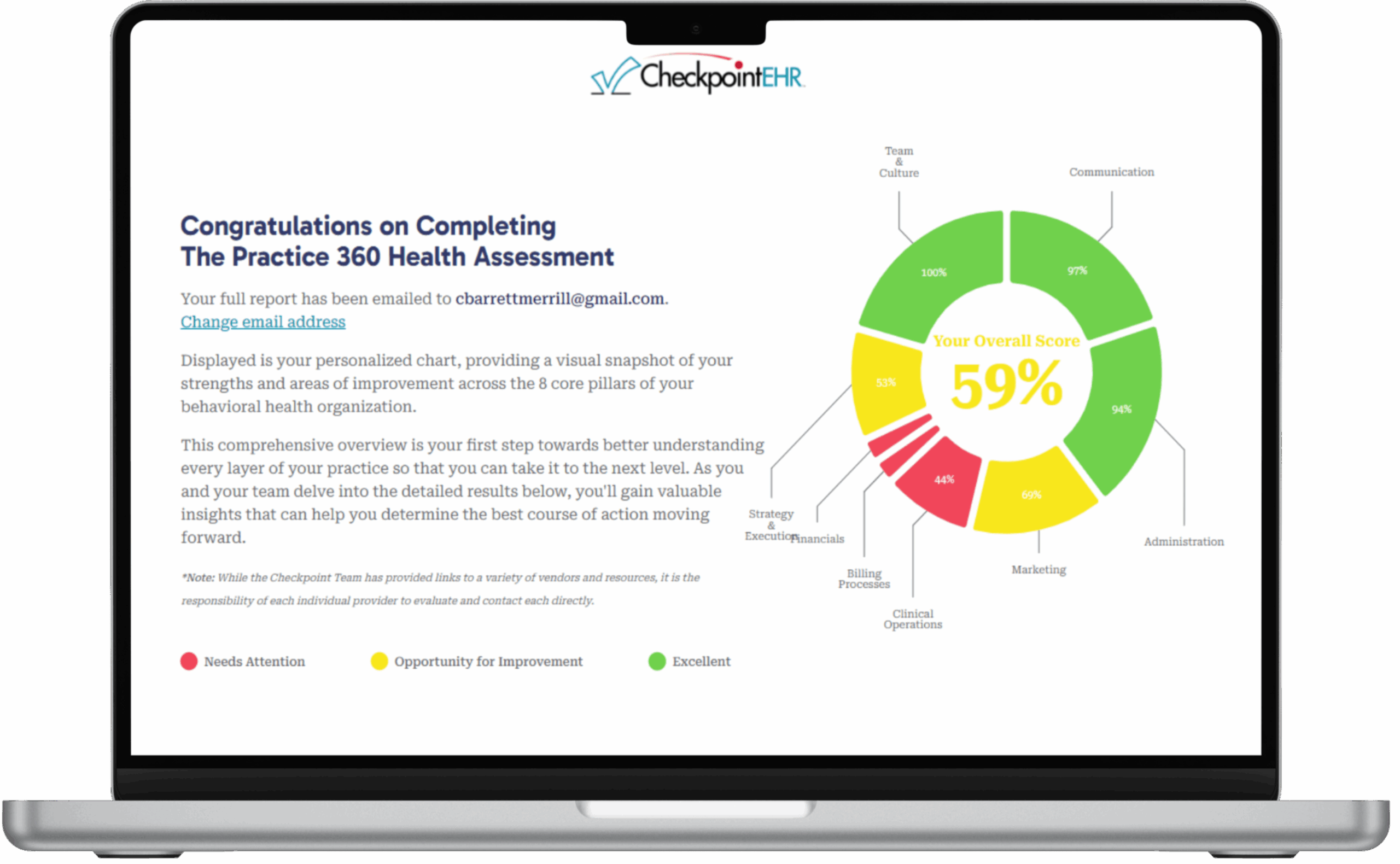HIPAA vs SOC 2 for Therapists

In behavioral health, safeguarding client information is paramount. Mental health therapists must navigate a complex landscape of regulations and standards designed to protect sensitive data. Two primary frameworks are Health Insurance Portability and Accountability Act (HIPAA) and System and Organization Controls 2 (SOC 2). Understanding their distinctions and implications is essential for maintaining compliance and ensuring the security of mental health information.
What is HIPAA?
Enacted in 1996, HIPAA is a federal law that establishes national standards for the protection of individually identifiable health information. We call this information protected health information (PHI).
The primary objectives of HIPAA are: ensuring health insurance portability, reducing fraud and abuse, and mandating consistent data standards. For therapists, compliance with HIPAA is not optional; it is a legal requirement. The HIPAA Privacy Rule and Security Rule outline specific safeguards:
- Privacy Rule: Regulates the use and disclosure of client information. This ensures that individuals do not share mental health PHI without consent, except under specific circumstances.
- Security Rule: Requires covered entities to implement administrative, physical, and technical safeguards to protect electronic PHI (ePHI).
Non-compliance with HIPAA can result in severe penalties, including substantial fines and legal action.
What is SOC 2?
SOC 2 is a voluntary compliance framework developed by the American Institute of Certified Public Accountants (AICPA). It evaluates an organization’s information systems relevant to security, availability, processing integrity, confidentiality, and privacy—collectively known as the Trust Services Criteria.
SOC 2 is not a compliance framework specific to one industry like HIPAA. It applies to any organization that deals with sensitive data. This includes companies in technology, finance, and healthcare.
To achieve SOC 2 compliance, you must have an independent audit. This audit checks how well the controls work over a set period.
Key Differences Between HIPAA and SOC 2
While both HIPAA and SOC2 compliance aim to protect sensitive information, they differ in scope, applicability, and enforcement:
Applicability:
- HIPAA: Mandatory for covered entities and business associates in the healthcare sector handling behavioral health PHI.
- SOC 2: Voluntary and applicable to any organization that manages sensitive data, regardless of industry.
Focus:
- HIPAA: Specifically targets the protection of PHI with defined standards and requirements.
- SOC 2: Broadly addresses data security and operational controls across various sectors.
Enforcement:
- HIPAA: Enforced by the Department of Health and Human Services (HHS), with legal penalties for non-compliance.
- SOC 2: Not legally mandated; compliance is often driven by client requirements and market expectations.
Role in Mental and Behavioral Health
For behavioral health therapists, understanding these frameworks is crucial:
- HIPAA Compliance: Therapists must have policies to protect PHI. They should conduct regular risk assessments, and all staff members should receive training on HIPAA rules.
- SOC 2 Compliance: Getting SOC 2 compliance is not required, but it shows you care about data security. This can help build trust with clients. It can also be a differentiator when collaborating with organizations that require stringent security measures.
Staying Compliant
To maintain compliance with both HIPAA and SOC 2, therapists should:
- Conduct Regular Risk Assessments: Identify potential vulnerabilities in handling PHI and implement corrective actions.
- Develop Comprehensive Policies: Establish clear guidelines for data protection, access controls, and incident response.
- Train Staff: Ensure that all employees understand their responsibilities under HIPAA and the importance of data security.
- Monitor and Audit: Regularly review behavioral health security measures and conduct internal audits to ensure ongoing compliance.
Selecting Technologies, Tools, and Vendors
When choosing technologies or working with vendors, therapists must make sure these partners follow the required compliance standards.
- Verify Compliance: Request documentation of HIPAA compliance and SOC 2 attestation reports from potential vendors.
- Assess Security Measures: Evaluate the vendor’s security protocols, including encryption, access controls, and incident response plans.
- Review Contracts: Make sure contracts have rules for vendors to follow. These rules should include what to do if there is a data breach.
- Continuous Monitoring: Regularly review vendor performance and compliance status to address any emerging risks.
For a deeper understanding of how SOC 2 compliance complements HIPAA requirements, you can read further here.
Additionally, recent developments highlight the evolving landscape of healthcare data security. The U.S. Department of Health and Human Services has proposed new rules. These rules aim to enhance cybersecurity for electronic protected health information (PHI) under HIPAA. Additionally, they require multi-factor authentication and encryption standards.
Staying informed about such changes is crucial for maintaining compliance. More details can be found here: Top 10 takeaways from the new HIPAA security rule NPRM.
In conclusion, HIPAA compliance is a legal requirement for therapists. However, working towards SOC 2 compliance can improve data security and build client trust. By thoroughly vetting vendors and implementing robust security measures, therapists can protect sensitive mental health information and navigate the complexities of regulatory requirements effectively.
For behavioral health practices evaluating compliant EHR systems and EHR security, consider CheckpointEHR today!


